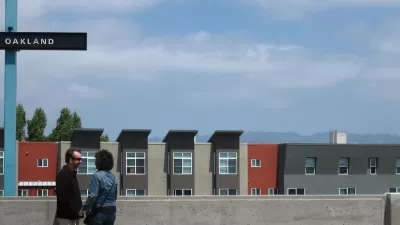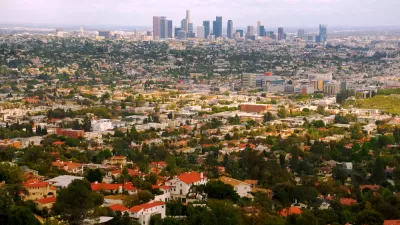Hundreds of thousands of Black Californians are moving away from urban areas, opting for the promise of abundance and opportunity offered by suburban communities, a trend referred to as "California's Black exodus."

Since the late 1980s, 275,000 Black Californians have moved away from expensive coastal cities like San Fransisco, Oakland, Los Angeles, and Compton, in a shift that Lauren Hepler describes as "California's Black exodus." In large numbers, ex-city dwellers have sought the opportunity and security of suburban communities in areas like California's Central Valley, the Inland Empire, and the San Joaquin-Sacramento Delta. Hepler points out that those who move to new cities face a different set of challenges and opportunities than those they left behind. "While a version of this geographic scramble is playing out for working and middle-class people of all races, the distinct obstacles that Black residents encounter in new communities raise the question: How far do you have to go today to find opportunity — and are some things ever really possible to leave behind?" writes Hepler.
As larger numbers of Black Californians make move from city to suburb, new forms of discrimination have emerged. Predatory lending practices and job discrimination are still unfortunate aspects of everyday life in the new hometowns of Black Californians. According to associate professor of geography and urban planning at Arizona State University Deirdre Pfeiffer, in some communities, the trend of upward mobility, opportunity, and security of experience during the "Black flight" in the '80s and '90s has not continued. Now, at the intersection of pandemic anxiety, political discord, and a profound wave of protests reckoning with systemic racism in the United States, "at issue is whether these overlapping crises will accelerate California’s Black exodus or force a reckoning both inside and outside major cities," says Hepler.
FULL STORY: The hidden toll of California’s Black exodus

Study: Maui’s Plan to Convert Vacation Rentals to Long-Term Housing Could Cause Nearly $1 Billion Economic Loss
The plan would reduce visitor accommodation by 25,% resulting in 1,900 jobs lost.

North Texas Transit Leaders Tout Benefits of TOD for Growing Region
At a summit focused on transit-oriented development, policymakers discussed how North Texas’ expanded light rail system can serve as a tool for economic growth.

Why Should We Subsidize Public Transportation?
Many public transit agencies face financial stress due to rising costs, declining fare revenue, and declining subsidies. Transit advocates must provide a strong business case for increasing public transit funding.

How to Make US Trains Faster
Changes to boarding platforms and a switch to electric trains could improve U.S. passenger rail service without the added cost of high-speed rail.

Columbia’s Revitalized ‘Loop’ Is a Hub for Local Entrepreneurs
A focus on small businesses is helping a commercial corridor in Columbia, Missouri thrive.

Invasive Insect Threatens Minnesota’s Ash Forests
The Emerald Ash Borer is a rapidly spreading invasive pest threatening Minnesota’s ash trees, and homeowners are encouraged to plant diverse replacement species, avoid moving ash firewood, and monitor for signs of infestation.
Urban Design for Planners 1: Software Tools
This six-course series explores essential urban design concepts using open source software and equips planners with the tools they need to participate fully in the urban design process.
Planning for Universal Design
Learn the tools for implementing Universal Design in planning regulations.
City of Santa Clarita
Ascent Environmental
Institute for Housing and Urban Development Studies (IHS)
City of Grandview
Harvard GSD Executive Education
Toledo-Lucas County Plan Commissions
Salt Lake City
NYU Wagner Graduate School of Public Service





























